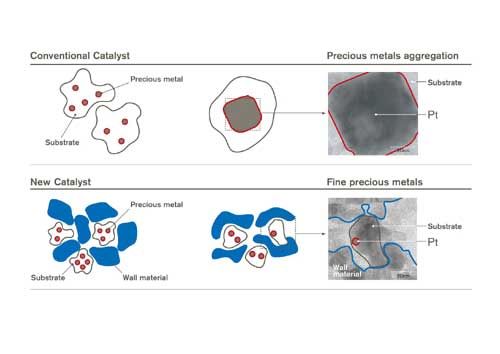Teaching nanotechnology through child's play
Video games designed to be fun while inspiring the next generation of scientists.
Aug 1st, 2007
Read more
Video games designed to be fun while inspiring the next generation of scientists.
Aug 1st, 2007
Read moreFirst-of-its-kind collection of papers explores full range of issues, from risk to medicine to privacy to artificial intelligence and more.
Aug 1st, 2007
Read moreEngineering pliable, new vocal cord tissue to replace scarred, rigid tissue in these petite, yet powerful organs is the goal of a new research project.
Jul 31st, 2007
Read moreUS Rep. Mike Honda today introduced HR 3235, the Nanotechnology Advancement and New Opportunities (NANO) Act, comprehensive legislation to promote the development and responsible stewardship of nanotechnology in the United States.
Jul 31st, 2007
Read moreAs a result of the absence of a Mexican National Initiative in the field of nanotechnology research, the United States influence in the area has grown significantly.
Jul 31st, 2007
Read moreIn comparison to previously designed hydrogen sensors, which are rigid and use expensive, pure palladium, the new sensors are bendy and use single-walled carbon nanotubes to improve efficiency and reduce cost.
Jul 31st, 2007
Read moreResearchers have created gold nanoparticles that are capable of identifying marker proteins on breast cancer cells.
Jul 31st, 2007
Read moreNew delivery system might also carry drugs or cells to targeted sites.
Jul 31st, 2007
Read moreResearchers have come up with a breakthrough that will aid the reproducible fabrication of robust synthetic single-nanopore membranes.
Jul 31st, 2007
Read moreDARPA grant to create and test nanoparticles that may deliver morphine to wounded soldiers faster and more safely.
Jul 30th, 2007
Read moreA grant for the development of an implantable biochip that could relay vital health information if a soldier is wounded in battle or a civilian is hurt in an accident.
Jul 30th, 2007
Read more Nissan develops new technology for cleaner exhaust emissions.
Nissan develops new technology for cleaner exhaust emissions.
Jul 30th, 2007
Read moreScientists have identified a new technique for cleansing contaminated water and potentially purifying hydrogen for use in fuel cells, thanks to the discovery of a innovative type of porous material.
Jul 30th, 2007
Read moreA TV interview with the founder of Midatech, a nanoparticle manufacturer.
Jul 30th, 2007
Read moreResearchers have used the world's thinnest material to create sensors that can detect just a single molecule of a toxic gas.
Jul 30th, 2007
Read moreNew company will create products with nano-features for industrial markets.
Jul 30th, 2007
Read more